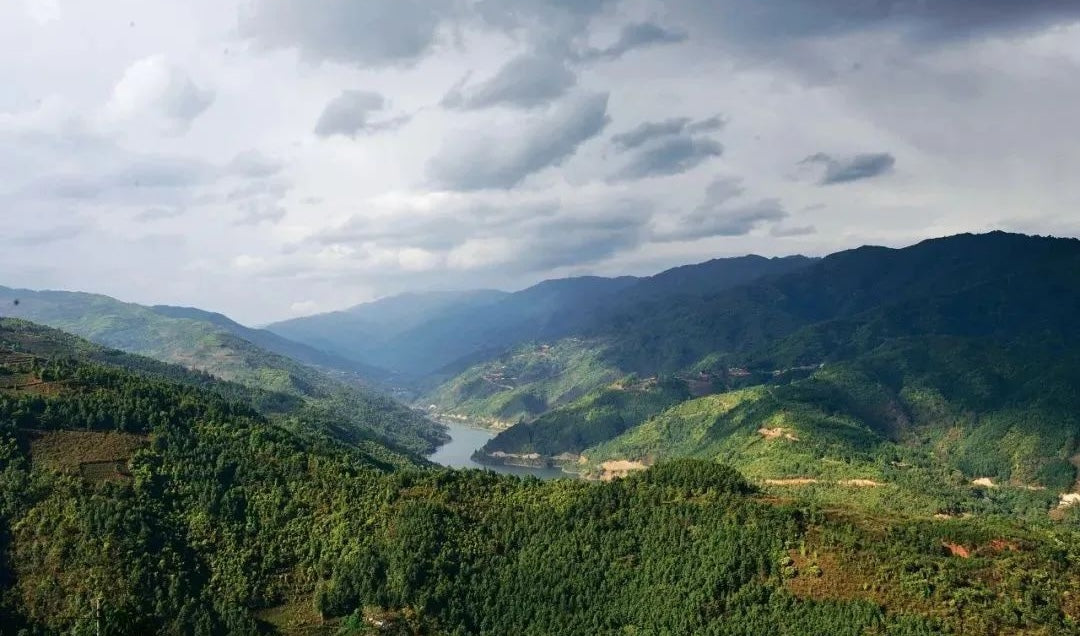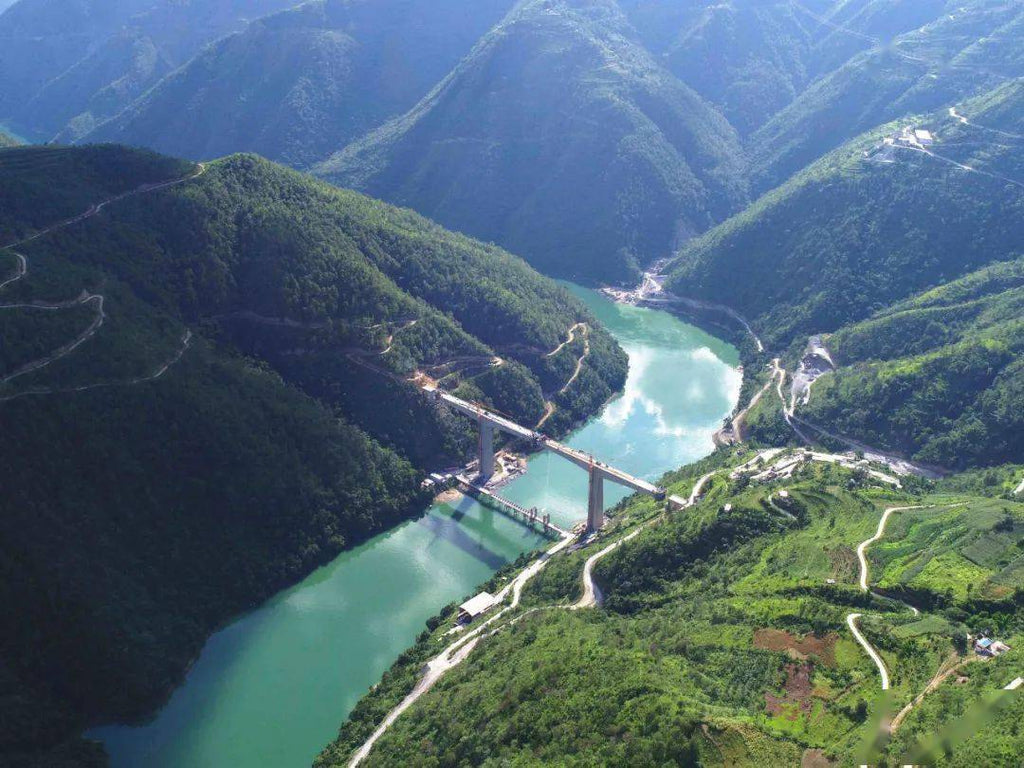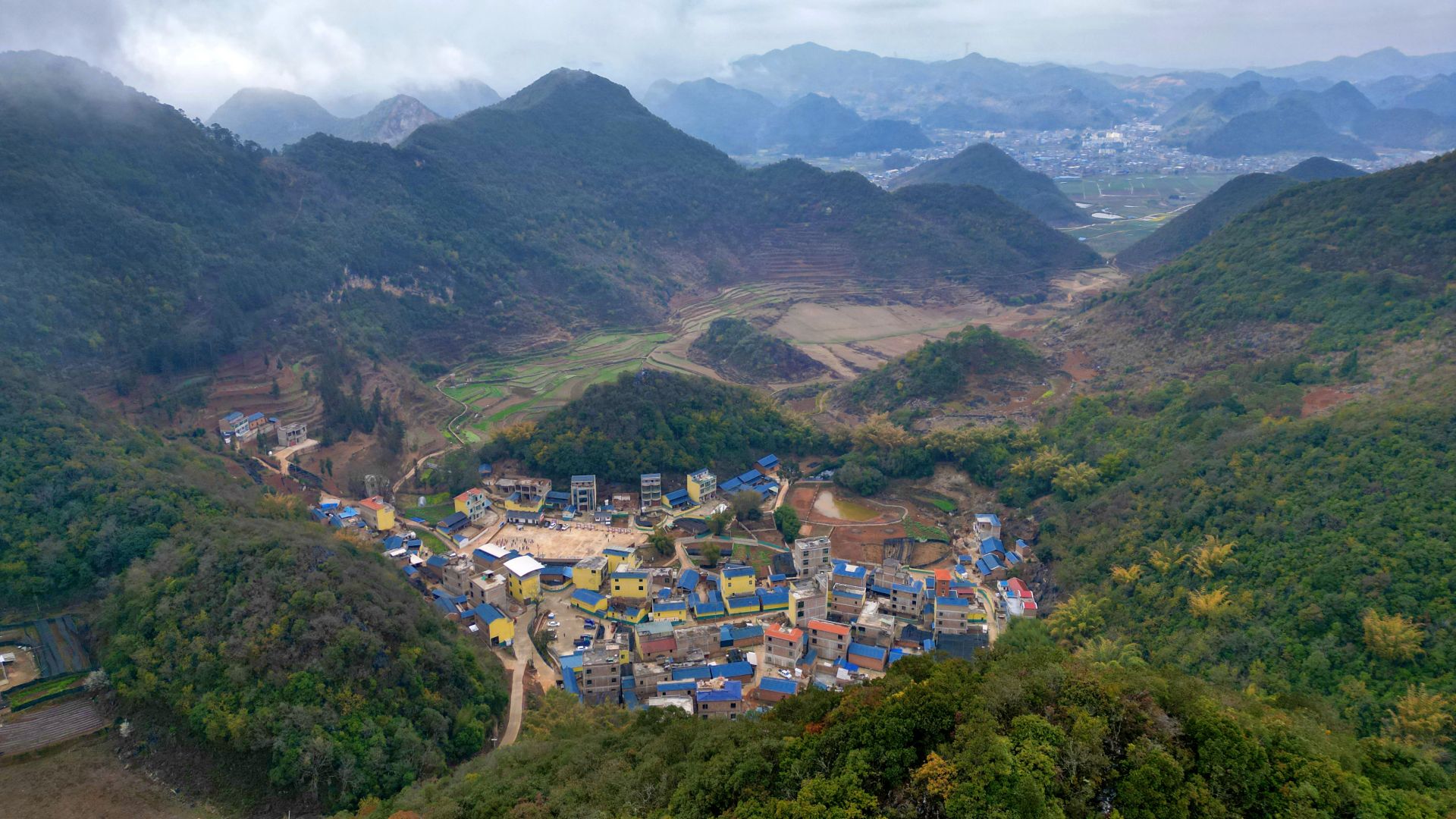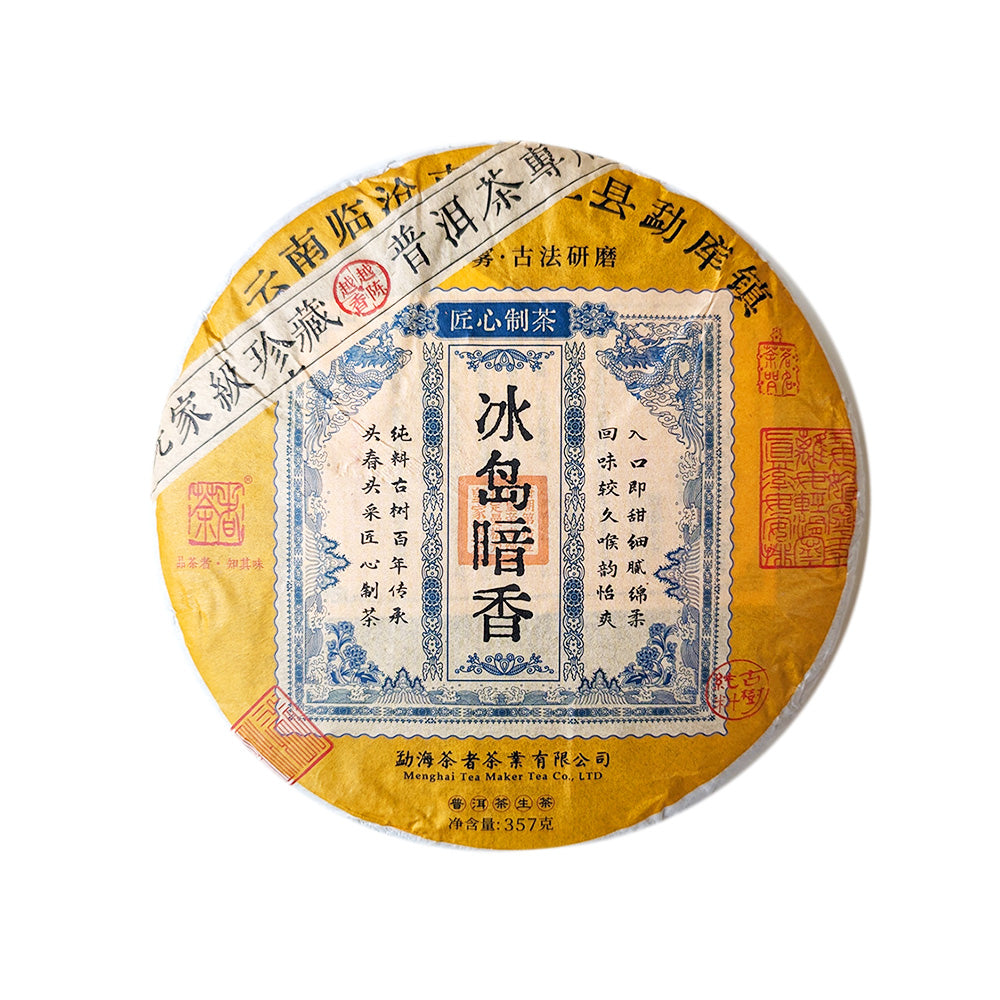Mengku-theeregio: een complete gids voor Mengku Pu Erh Thee

Deel
Als geboorteplaats van thee kan de Chinese provincie Yunnan worden onderverdeeld in 3 grote theegebieden: Xishuangbanna, Pu'er en Lincang. Onder hen is Lincang de grootste en in China ook wel bekend als de ‘thee-inventaris ter wereld’.
In deze publicatie introduceren we pu erh-thee uit de Mengku-theeregio, een van de meest populaire regio's van Lincang, waar veel pu erh-thee van hoge kwaliteit wordt gemaakt.
De theeregio is vernoemd naar de stad Mengku in het noordelijke deel van de provincie Shuangjiang in Lincang, waar de meerderheid van de inwoners voor haar inkomen afhankelijk is van de thee-industrie. De mensen van Mengku hebben een lange geschiedenis van theeteelt en ontwikkelden een bijzondere theecultuur. De regio staat bekend om de hoogwaardige pu erh-thee, gemaakt van de lokale Mengku Big Leaf-variëteit.
De Mengku Big Leaf-variëteit
Dankzij het uitstekende klimaat en de bodemgesteldheid kunnen de inheemse Mengku-theebomen met grote bladeren bloeien en groot worden. De bladeren die worden geoogst van de Mengku-bomen met groot blad zijn groot, zeer voedzaam en rijk aan polyfenolen. In feite is de Mengku-variëteit met grote bladeren de meest voorkomende theeboomvariëteit in heel West-Yunnan.
Mengku staat bekend om zijn eeuwenoude theebomen. In feite bevindt 80% van de oude theetuinen in de provincie Shuangjiang, met theebomen van meer dan 120 jaar oud, zich in de Mengku-theeregio. De oude theebomen bevinden zich op grote hoogte en beslaan een oppervlakte van ongeveer 2092 hectare. Het wordt beschouwd als de grootste regio met wilde, eeuwenoude theebomen op de hoogste hoogte en met de hoogste dichtheid, ook wel de 'tea tree-genenpool' genoemd.

Mengku kan worden verdeeld in de oostelijke en de westelijke helft, gescheiden door de Nanmeng-rivier. De Ma'an-berg ligt aan de oostkant van de rivier, terwijl de Bangma-berg aan de westkant van de rivier ligt.
Ma'an-berg (oostelijke helft van de berg)
Met een gemiddelde hoogte van 1815 meter en een gemiddelde jaartemperatuur van 15,58℃ is de Ma'an-berg (ten oosten van de rivier) het hele jaar door bedekt met wolken en mist, met weelderig gebladerte, veel zonneschijn en een overvloed aan berg 'qi', waardoor het een ideale plek is voor theebomen. Ze zijn lang, met een spreidend bladerdak en dichte, donzige bladeren. Theesoorten uit dit gebied zijn de meest representatieve Mengku-thee. De bladeren zijn recht en stevig en zorgen voor thee met een robuuste smaak, een sterk aroma en een krachtige en langdurige afdronk.
Bangma-berg (westelijke helft van de berg)
De theebomen in de Bangma-berg (ten westen van de rivier) genieten van de zon tijdens de zonsondergang. Thee gemaakt van Bangma-bladeren is doorgaans vrouwelijker: fris aroma, lichte bitterheid die snel verandert in zoetheid, en een zacht en zacht mondgevoel.
18 dorpen van Mengku
Naast het categoriseren van mengku-thee aan de oost- en westkant van de Nanmeng-rivier, hebben pu erh-kenners de neiging de theesoorten van deze regio te verdelen op basis van het dorp waar het vandaan komt. Zoals het gezegde luidt: “18 dorpen van Mengku, elk heeft goede thee”. Van de 18 dorpen liggen er 8 aan de oostkant van de rivier, terwijl er 10 aan de westkant liggen.
Dorpen van de oostelijke helft van de berg
De 8 dorpen aan de oostkant van de rivier zijn Mangbang, Ba Nuo, Najiao, Bangdu, Nasai (inclusief Zheng Qi Tang en Xiaocun), Donglai, Mangna en Chengzi.
Mangbang
De in Mangbang geproduceerde Pu erh-thee is na het zetten licht bitter en samentrekkend met een zeer snelle zoete nasmaak. De thee is vol van smaak, met een diepe en lange smaak. Het productiegebied ligt op grote hoogte, met een mild klimaat en overvloedige regenval.
Ba Nuo
Ba Nuo is een ander dorp aan de oostkant van de rivier. Het is beroemd om zijn unieke manier van thee verbouwen, bekend als ' teng tiao cha ' of 'wijnstokthee'. Banuo pu erh-thee heeft een sterk en langdurig aroma met een zachte en dikke mondgevoel.
Najiao
Najiao ligt op een hoogte van ongeveer 1800 meter en de belangrijkste productie van pu erh-thee is ook wijnstokthee. De hier geproduceerde thee is zoet en heeft een delicate smaak met minder bitterheid en wrangheid.
Bangdu
Bangdu ligt op een hoogte van 1180 meter en krijgt veel zon. Het klimaat en de regenval zijn ideaal voor het verbouwen van thee. De thee heeft hier een sterk aroma, een gouden en heldere soepkleur, een krachtig mondgevoel, een rijke smaak en een langdurige 'chaqi' (thee-energie).
nasa
Nasai ligt in het midden van de oostelijke helft van de berg, met een hoge dichtheid aan eeuwenoude bomen. Er zijn drie dorpen onder de jurisdictie van Nasai, namelijk Xiaocun, Zheng Qi Tang en Nasai Dazhai, en de meeste inwoners van de drie dorpen zijn Lahu-minderheden. Onder hen is Zheng Qi Tang het dorp met de oudste theebomen.
Nasai puerh staat bekend als 'kleine Bingdao' vanwege de zoete smaak en volle smaak. De smaak is ook krachtig, maar goed uitgebalanceerd, met een aanhoudende zoete nasmaak.
Donglai
Donglai ligt op een hoogte van 1650 meter, met een gemiddelde jaartemperatuur van 20°C en voldoende neerslag, waardoor het geschikt is voor de grootschalige groei van theebomen. Donglai Puerh thee heeft een extreem sterk en aanhoudend aroma, met een snelle en krachtige afdronk, en een rijke en gelaagde smaak.
Mangna
Met een hoogte van 1150 meter beslaat Mangna een groot gebied en produceert een grote hoeveelheid thee. het bijzondere aan Mangna Puerh thee is de langdurige chaqi, waardoor de thee na rijping rijker smaakt.
Chengzi
Chengzi ligt 1129 meter boven zeeniveau en is een dorp met een combinatie van Yi en Han mensen. De puerh thee hier heeft een bittere toon en een lichte wrangheid. Het heeft een aanhoudende nasmaak en is lang houdbaar voor vele bereidingen van thee.
Dorpen van de westelijke helft van de berg
De westelijke helft van de berg omvat Bingdao (en de 5 dorpen onder zijn jurisdictie), Baka, Dongguo (inclusief Lushuitang), Dahusai, Gongnong, Banggai, Bingshan, Hudong, Daxueshan en Xiaohusai.
Bingdao
Bingdao ligt op een hoogte van ruim 1600 meter. De 5 dorpen die onder zijn jurisdictie vallen, zijn dat wel Bingdao Old Village, Nanpo, Dijie, Bawai en Nuowu Village, waar de meerderheid van de inwoners tot de Dai-minderheidsgroep behoort.
Bingdao-thee heeft bijna geen bitterheid en wrangheid, met een sterke en delicate zoetheid en frisheid, een zacht en aanhoudend aroma en een snelle en langdurige afdronk. Als gevolg hiervan is het ongelooflijk populair onder beginnende pu erh-theedrinkers.
Koe
Baka ligt op een hoogte van 1600 meter boven de zeespiegel. De oude theeplantage is naar schatting ongeveer 20 hectare groot en werd in de jaren tachtig uitgebreid met jongere theebomen en andere theebomen.
Baka pu erh thee is zoet en mild, soepel en vol en heeft een gelaagde smaak.
Dongguo
Dongguo ligt in de diepten van de westelijke kant van de rivier op 1750m boven zeeniveau. Het klimaat wordt gekenmerkt door relatief lage temperaturen en hoge luchtvochtigheid. De stabielere natuurlijke omstandigheden resulteerden in een hoger aantal eeuwenoude theebomen in de regio. Lu Shui Tang (2300m) is een kleiner dorp dat onder de jurisdictie van Dongguo valt en ook bekend staat als de 'verborgen parel van pu erh thee'.

Dongguo-thee heeft een geheel eigen stijl. De theebladeren zijn klein, omdat ze een mix zijn van grote, middelgrote en kleine bladsoorten. Het aroma van de thee smelt na het zetten in het water, met een intense geur en sterke smaak, eerst bitter, maar met een langdurige zoete nasmaak.
Dahusai
Dahusai puerh is een vertegenwoordiger van Mengku's zwarte thee met grote bladeren, de theebomen zijn over het algemeen meer dan 100 jaar oud en het gebied met oude theeplantages beslaat 40% van de totale oppervlakte van het theeproductiegebied.
Dahusai Puerh-thee is rijk aan inhoud, met een overwegend bloemig en fruitig aroma, een vleugje bitterheid en een langzame en aanhoudende zoete afdronk.
Gongong
Met een hoogte van 1558 meter, een gemiddelde jaartemperatuur van 20°C en een regenval van 1750 mm is Gongnong ideaal voor het kweken van theebomen. De hier geproduceerde Puerh-thee heeft een helder gouden soepkleur, een zoete smaak en een sterk thee-aroma met een duidelijke honinggeur die in de mond blijft hangen.
Banggai
Banggai ligt op een hoogte van 1400 meter, met een gemiddelde jaartemperatuur van 26ºC en veel regenval, waardoor de theebladeren rijk zijn aan voedingsstoffen.
Banggai pu erh thee wordt gekenmerkt door dikke bladeren, een felgele soepkleur en een zoete smaak.
Bingshan
De hoogte van Bingshan ligt tussen 870 en 2700 meter, de gemiddelde temperatuur is 20ºC, wat relatief laag is. Als gevolg hiervan groeien de theebomen in dit gebied langzamer.
Bingshan-thee heeft een sterk aroma van fruit en honing, de bittere en wrange smaak is zwaar maar verdwijnt snel, de soepkleur is geel en helder en de thee kan vele malen worden getrokken.
Hudong
De hoogte van Hudong is 1150 meter, met een gemiddelde jaartemperatuur van 25ºC. Hudong-thee is aangenaam fris, soepel en mild en kan vele malen worden gezet.
Daxueshan
Daxueshan ligt op de belangrijkste top van de Bangma-berg, met een hoogste hoogte van 3233 meter. De oude theebomen bevinden zich op een hoogte van 2200 tot 2750 meter en staan bekend als de hoogst gelegen oude theetuinen ter wereld.
Daxueshan pu erh thee heeft een orchideearoma met honingzoetheid. De smaak is licht bitter met een aangenaam gevoel op de tong.
Xiaohusai
Xiaohusai ligt op een hoogte van 1800 meter en de dorpelingen zijn voornamelijk Lahu-mensen. Xiaohusai heeft de grootste oude theeboomplantage in Mengku. De hier geproduceerde thee heeft een zeer sterk aroma van fruit en honing. De smaak is licht bitter met uitgesproken wrangheid en een gladde textuur.



